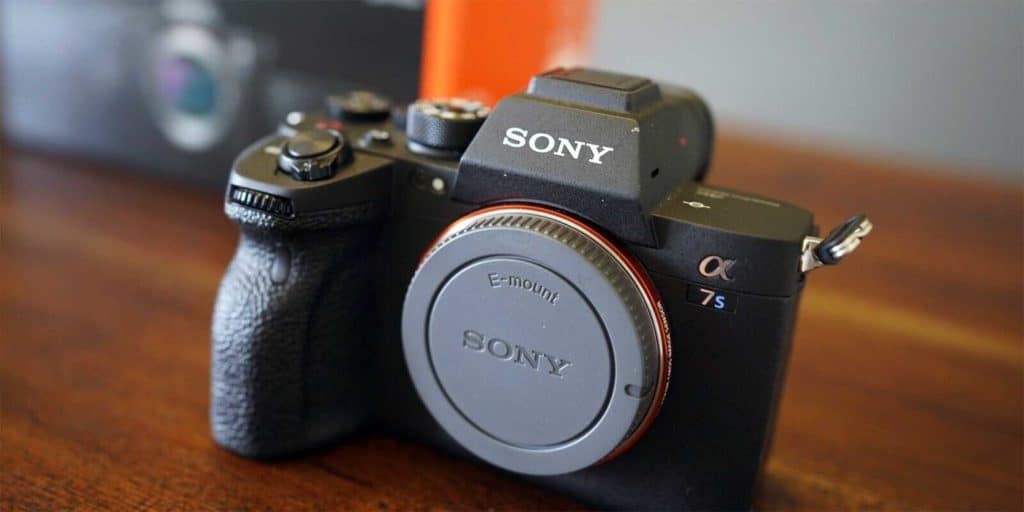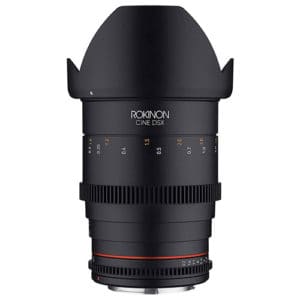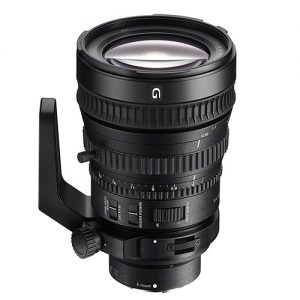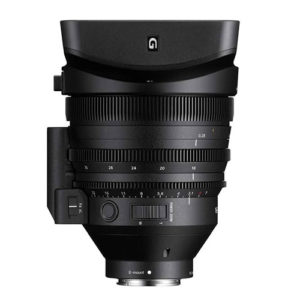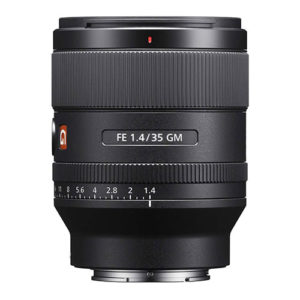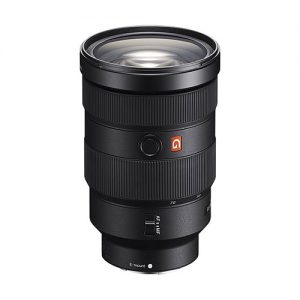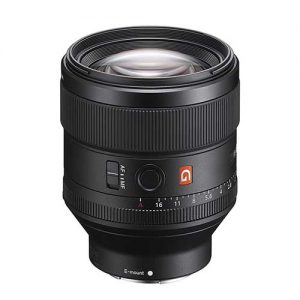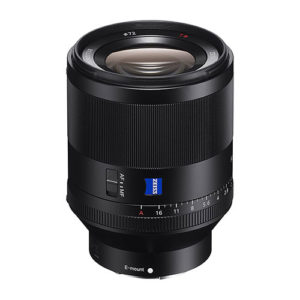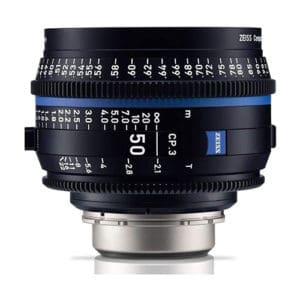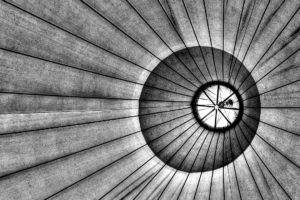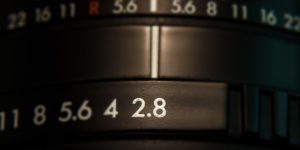The Sony a7SIII is a fantastic video platform, and the Sony E-mount is becoming more and more popular with videographers.
The lens makers are following suit, and today we have more cine lens choices than ever before.
No matter what style of shooting you do, there are some great options for the a7S III.
For this article, I selected eight great video lenses for the Sony ILCE-7SM3:
If you’re interested in trying your hand at fully-manual cinema-style shooting, you can’t go wrong with a starter set of Rokinon cine lenses.
These Korean-built lenses have surprisingly good optics for their price point.
Their build quality is surprisingly good too.
As a bonus, they’ve put a lot of work into improving their cine offerings in the last few years. For the record, Rokinon and Samyang lenses are the same items but branded differently for different markets.
The Cine DSX is a fully manual lens with few frills.
They have nine-blade apertures for smooth bokeh, and the fast t-stop of T1.5 provides for lots of creative flexibility in your shooting.
These lenses are weather-sealed, with a sleek design that makes them popular with photographers and videographers alike.
For a matched set, here are the links to the other T1.5 Cine DSX lenses available for the Sony E mount.
If you have Rokinon/Samyang Cine DS-series lenses, the DSX lenses are color matched to those as well.
Rokinon and Samyang also sell a premium line of cine lenses that they call the Xeen-series, like the Rokinon Xeen XN50-C 50 mm T1.5 Professional Cine Lens for Sony E.
It’s available in 14, 24, 35, 50, and 85 mm focal lengths, and it provides an outstanding professional-quality lens option for Sony E shooters.
Another interesting option for shooting cinema on the a7S III is the FE 28-135 mm f/4 Power Zoom.
This is a cinema-like lens that is designed with the working videographer in mind.
It’s got a great focal length range for video.
If I could choose, I’d like to see it a bit faster than f/4, but the low-light capabilities of the a7S III will make up for it in most, if not all situations.
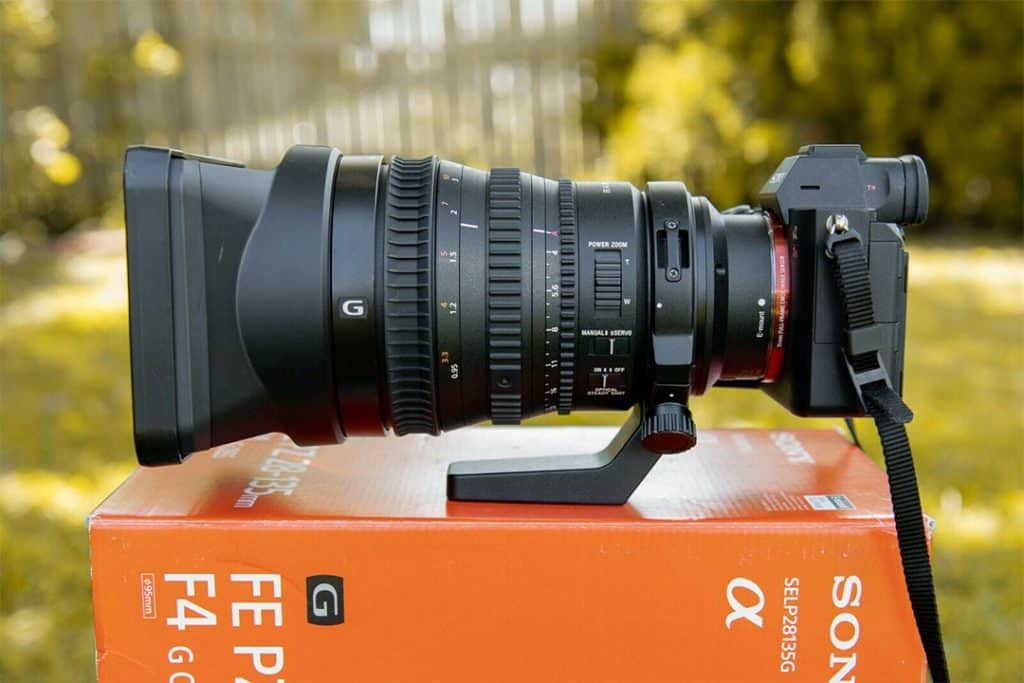
Video features include a parfocal zoom and very little breathing.
The large barrel and smooth, geared rings mean that fine-tuning focus, zoom, and iris settings are easy.
Plus, it has power zoom functionality for smooth on-film zoom-ins.
Both the focus and zoom motors have super-quiet SSM (supersonic wave motor) technology for silent operation.
It’s a big lens, weighing 42.9 ounces without the tripod mount. It takes 95 mm screw-on filters.
Like all G-series lenses, it is dust and moisture resistant. The optics are excellent, whether you’re shooting 4K video or 12.1MP images.
The next lens is geared towards professional movie studios, and more often paired with a sony FX series cameras than an A7III (make sure you are sit down before checking the price).
If you want the functionality and compatibility of a Sony G-series autofocus lens, but you want the creative options that only a cine lens will offer, this is the lens for you.
This is one of the absolute best cine lenses you can get for the a7S III, and it’s specifically designed for video content creators, if money is no object😄
With its manual focus, zoom, and iris controls, the lens’s large barrel is designed for precise and smooth adjustments.
The zoom is parfocal, so objects stay in focus regardless of zoom position.
The lens has a detachable servo unit that provides fast and accurate autofocus and servo-powered zoom.
You can remotely control all of the lens controls from your remote or smartphone, including the iris.
The lens weighs 49.1 ounces, or about 1.4 kilograms, making it one of the heaviest E-mount lenses you’ll find.
But optically, it holds its own against other true-cine lenses while maintaining full native Sony E-mount functionality.
If you want to shoot video with prime lenses, Sony’s newest line of G-Master lenses offers incredible sharpness and clarity.
The G-Master primes are wide and fast, with max f-stops of f/1.4.
The company uses the best coatings and extra-low dispersion glass elements to reduce chromatic aberrations, flare, and ghosting.
The 11-bladed iris makes some of the smoothest and most beautiful bokeh that you’ve ever seen.

The FE 35 mm f/1.4 GM features an instant selector to choose between manual and autofocus.
The manual focus ring has a linear response, meaning that subtle changes to the ring always have the same direct result of the image focus.
This means a smooth and precise control for video shooting.
There’s also a selector, so you can choose to de-click your aperture ring right on the lens.
Compared to many cine lenses, the FE 35 mm f/1.4 GM is relatively small and light. It weighs 18.5 ounces, or 524 grams, and is 3 7/8 inch, or 96 mm, long.
It takes 67 mm screw-on filters.
If you’re looking for one lens that works equally well for photography and video, the Sony GM lineup offers several zoom options that can make great multitasking lenses.
For the cameraman who likes one lens to do everything, my recommendation is the Sony FE 24-70 mm f/2.8 GM.
The focal range of this lens covers what you’ll need for video work 90 percent of the time or more.
The fast f/2.8 aperture means it will film in pretty much any lighting situation, with creamy bokeh and super-fast autofocus to boot.
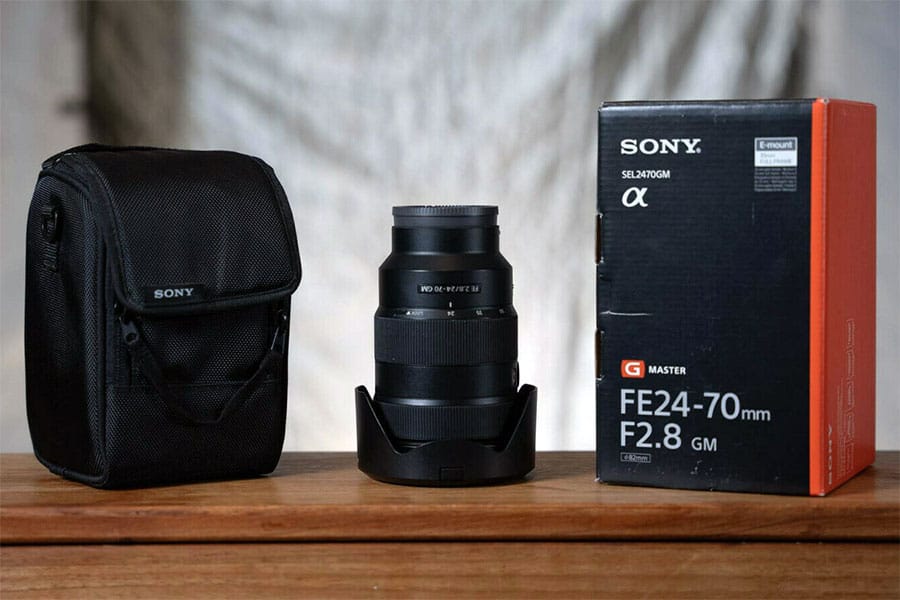
If you want to add even more reach to your zoom-lens arsenal, look for the Sony FE 70-200 mm f/2.8 GM OSS.
On the other hand, if you need an even wider field-of-view for establishing shots, check out the equally capable Sony FE 16-35 mm f/2.8 GM.
Sony’s best portrait or close-up lens is the FE 85 mm f/1.4 GM.
This lens is of the same design and line as the FE 35 mm f/1.4 GM, making the perfect videography kit if you add all three to your camera bag.
The FE 85 is probably the nicest of the three, and it’s a wonderful addition to your camera kit for close-up shots and over-the-shoulder work.
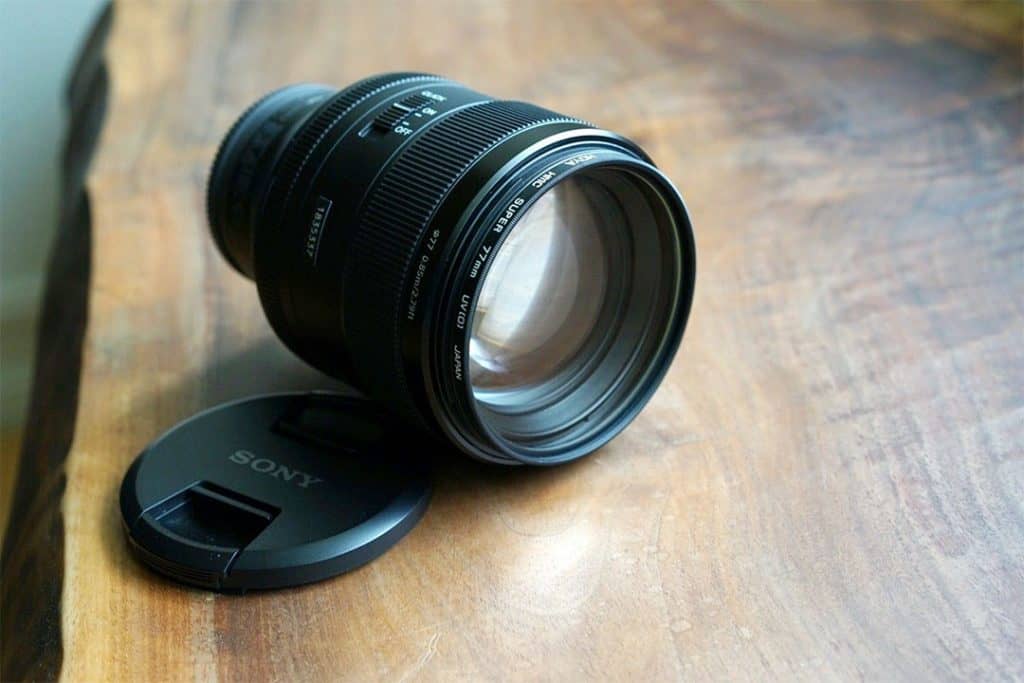
Since the 85 mm is the standard for photography portrait work, Sony has put extra effort into ensuring that this lens has the best bokeh qualities and reliable image quality.
It has the same 11-blade aperture that other GM lenses have, along with an SSM (Super Sonic Wave Motor) autofocus that is fast and silent.
If you’re looking for a little more reach for your A7S III close-ups, check out the Sony FE 100 mm f/2.8 STF GM OSS.
There’s also the Sony FE 135 mm f/1.8 GM, another great GM lens that has a wonderful reputation among portrait photographers.
Oddly, Sony does not have a G or GM Prime 50 mm.
This seems like a glaring omission on the part of the company, especially considering how useful a 50 is for video work on a full-frame camera.
But alas, the best lens Sony currently has is their Zeiss Planar T FE 50 mm f/1.4 ZA lens.
Even though this lens isn’t branded as a G-series lens, it shares much of that product line’s designs and features.
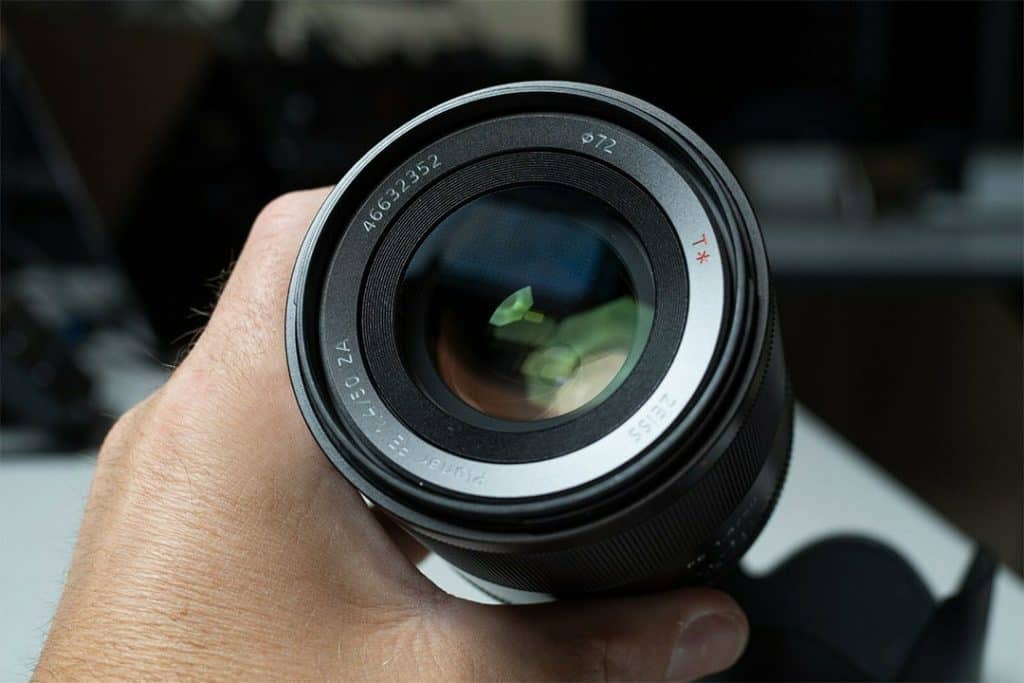
Like the 35 mm above, it has a dedicated AF/MF selector switch and a de-click option for the aperture control.
The 50 mm lacks the programmable multi-function button, however.
The 50 mm prime weighs 27.5 ounces (778 grams) and is 4 3/8 inch long (108 mm), making it just slightly larger than the 35 mm prime.
In the world of cine prime lenses, few names grab more attention than Zeiss.
Zeiss is closely linked to Sony, so it’s no surprise that they’re offering their cine lenses in the E-mount.
The Zeiss CP.3 series of lenses are loaded with lots of great features for videography.
They are all balanced and sized similarly, so there’s no need to recalibrate your stabilizer for lens changes.
They have a smooth focus rotation that moves 300-degrees around the lens barrel.
The lenses have a data port to support Zeiss eXtended Data (XD), which transmits real-time information about the lens distortion and shading.
The lenses are also modularly built, with adapters available to switch to other mounting systems. This feature Zeiss advertises as “future-proofing.”
You can get the following lenses in this series.
- CP.3 15 mm T2.9
- CP.3 18 mm T2.9
- CP.3 21 mm T2.9
- CP.3 25 mm T2.1
- CP.3 28 mm T2.1
- CP.3 35 mm T2.1
- CP.3 50 mm T2.1
- CP.3 85 mm T2.1
- CP.3 100 mm T2.1
- CP.3 135 mm T2.1
A7S III Video Lenses FAQ
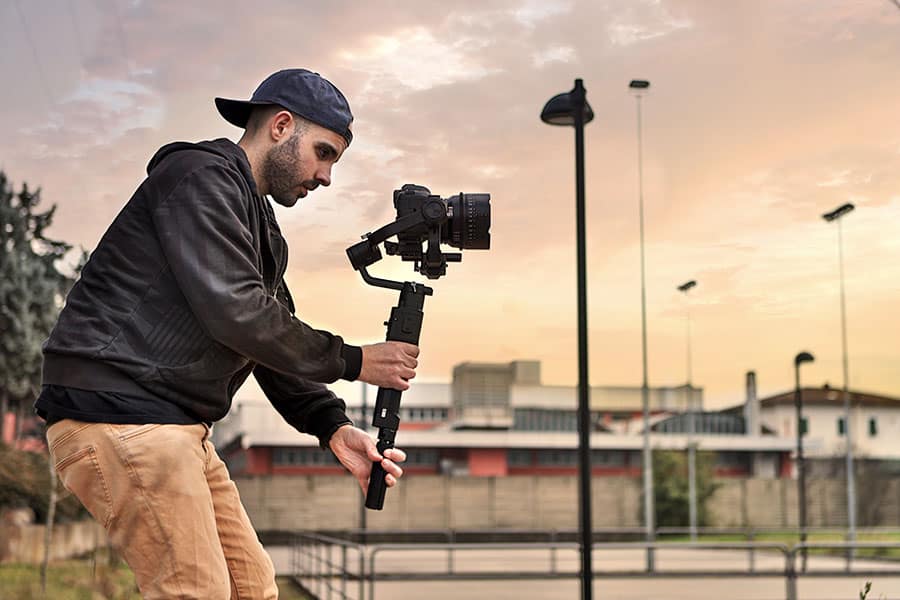
Adapting Different Mount Lenses to Your Sony a7S III
One of the most significant advantages of a mirrorless camera is the seemingly infinite ways to adapt other lenses to fit.
Since the sensor sits very close to the lens mounting flange, you can use nearly any lens style with the right adapter tube. And simple adapter tubes are widely available.
The industry standard mounts for video have traditionally been the Canon EF and PL mounts.
You’ll find many cine lenses built for these mounts, and while more are being built every day, fewer for the Sony E-mount.
The EF and PL mounts are slightly more robust and better suited to handle substantial cine lenses.
As long as you support the lens properly, however, there should be no problem using these large lenses on an a7S III.
Adapting a lens from another mount to your Sony E flange is always hit or miss. Some lens combinations and adapters work flawlessly, while others leave a lot to be desired.
The best thing you can do is research the lens carefully and find others using the same combination. Try to learn from their experience and see if there are any compatibility issues.
If you’re bringing a fully manual lens over to your a7S III, the adapter tube needs only to adapt the bayonet mounting locks to match.
But if you want exposure, aperture, and focusing systems to work, the adapter will need the electrical contacts and to be able to “talk” to the lens.
This is where things can ofter run awry.
Again, it’s best to check with the adapter tube manufacturer to make sure your a7S III will work with the lens you choose.
What is the Difference between E and FE Sony Lenses?
Within the Sony E-mount lens family, there are two styles. You can use them both on your a7S III, but with some important caveats.
The best lenses to use are labeled “FE” for full-frame cameras. These lenses will produce images that will fill your camera sensor, and they are specifically built for the a7S family of cameras.
Sony also sells “E” lenses in the same categories. These lenses are specifically designed for cameras with smaller APS-C sensors, like the a6000 family.
The bayonet mount is identical, so you can technically mount and use these lenses on your a7S III.
But these APS-C E-lenses make an image that only fills the middle of your camera’s sensor.
The camera will automatically detect the E lens and crop the frame. It doesn’t show a change or indicate the difference on the viewfinder.
But when you download your images, you will find that they are in the neighborhood of 10MP still images or 1080p HD video.
In the video world, this size is just slightly smaller than Super 35 video.
Should I Get an Autofocus Lens for Video?
Video shooters usually have an idea of what they want from their camera going in. What did you buy your a7S III to film?
Do you work at events or weddings? Or are you film documentaries or screenplays? Each type of shooter is going to have a completely different set of requirements.
First, let’s discuss video shooters who work events or in fast-moving environments. These camera operators need to pick their equipment up and get recording quickly.
They need autofocus and fully automatic settings that work quickly, reliably, and accurately. For these videographers, I recommend sticking to Sony G or GM lenses. If you lean heavily on the video side of things, look at their FE C-series lenses like the Sony FE C 16-35 mm T3.1 G.
If you need something smaller and more agile to move around a banquet hall, stick with something trusty like the Sony FE 24-70 f/2.8 G.
Cinema shooting, by contrast, is a different animal. The camera is more likely to be on a tripod, slide, or boom.
The actors are placed in specific locations, and care is taken to plan the shot’s depth of field and focus area. It’s easier in these situations to use a manual focus lens since everything happens predictably.
Plus, if something goes wrong, you can reshoot the scene.
Manual focus is also useful for pull-focus, a technique used in filmmaking where the director can change the focus during shooting.
It’s used as a storytelling device since the viewer can watch the camera focus from one object to another. It’s a cool effect, and you can only do it with a very high-quality, geared manual focus control.
Do I need a Cine Lens?
What exactly is a cine lens? Technically speaking, these are just lenses that are branded for “cinema” use.
In practice, this usually means that they have de-clicked aperture rings, measure their aperture in t-stops instead of f-stops, and have geared focus and zoom rings.
The best cine lenses will be color-matched to one another and have little or no focus breathing.
Another advantage to Sony’s cine zoom lenses and many others is that they are parfocal.
That means that if you want to change the lens’s zoom during a shot, the focus remains unchanged.
As more mirrorless and DSLR users start shooting video, lens makers have begun repackaging their still lenses into something that is a bit of a hybrid still-cine lens.
These lenses have the de-clicked apertures, and at least smooth-operating focus rings.
They’re a great place to start, and compared to true cine lenses that offer an outstanding value.
What's Better for Video--Prime or Zoom Lenses?
Like auto or manual focus lenses, videographers have to make a personal preference between zoom or prime lenses.
The difference comes down to style more than functionality.
The advantage of using high-quality zoom lenses is that you might be able to get away with buying fewer lenses and making fewer lens changes.
If you’re working in the field or need to travel, this is a significant consideration.
Another advantage is that if you use one lens for most or all of a project, you should have no exposure or color matching problems.
The look and feel of the final project will be cohesive and uniform.
Prime lenses have some optical advantages, though. They are usually smaller and lighter than zooms. For a given focal length, you will be able to find much faster primes.
And if you look at lens speeds, a prime will be much cheaper than a zoom lens of the same speed.
They’ll also be optically more precise since the maker could optimize the glass for that one focal length. No matter how well they’re made, all zoom lenses make compromises somewhere.
For video, the problem with primes is that they need to be matched. Most videographers want to purchase prime lenses in a set so that the light settings, colors, and tonal qualities all match.
When deciding which one is right for your project, it might help to realize that zooming during a shot is rarely done.
Many shots are set up at a particular focal length, especially in documentaries and screenplays. A much smoother way to zoom in is to put the camera on a cart or steady-cam and move closer to the subject.
For zooming on camera during a shot, you’ll need a super-smooth geared ring or a power zoom (PZ). Sony offers several PZ lenses for video shooters, but using them takes a little bit of practice to get smooth results.
Conclusion
The Sony a7S III is one of the best full-frame video and still cameras you can get your hands on.
It’s perfect for a wide range of applications with the right lens, from cinematic documentaries to events.
What sort of lens do you prefer for video work? Let me know in the comments below.
Sony A7SIII Specifications
| Body type | SLR-style mirrorless |
| Max resolution | 4240 x 2832 |
| Effective pixels | 12 megapixels |
| Sensor size | Full frame (35.6 x 23.8 mm) |
| Sensor type | BSI-CMOS |
| ISO | Auto, 80-102400 (expands to 40-409600) |
| Lens mount | Sony E |
| Focal length mult. | 1× |
| Articulated LCD | Fully articulated |
| Screen size | 3″ |
| Screen dots | 1,440,000 |
| Max shutter speed | 1/8000 sec |
| Format | MPEG-4, XAVC S, XAVC HS, XAVC S-I, H.264, H.265 |
| Storage types | Dual SD/CFexpress Type A slots |
| USB | USB 3.2 Gen 1 (5 GBit/sec) |
| Weight (inc. batteries) | 699 g (1.54 lb / 24.66 oz) |
| Dimensions | 129 x 97 x 81 mm (5.08 x 3.82 x 3.19″) |
| GPS | None |

